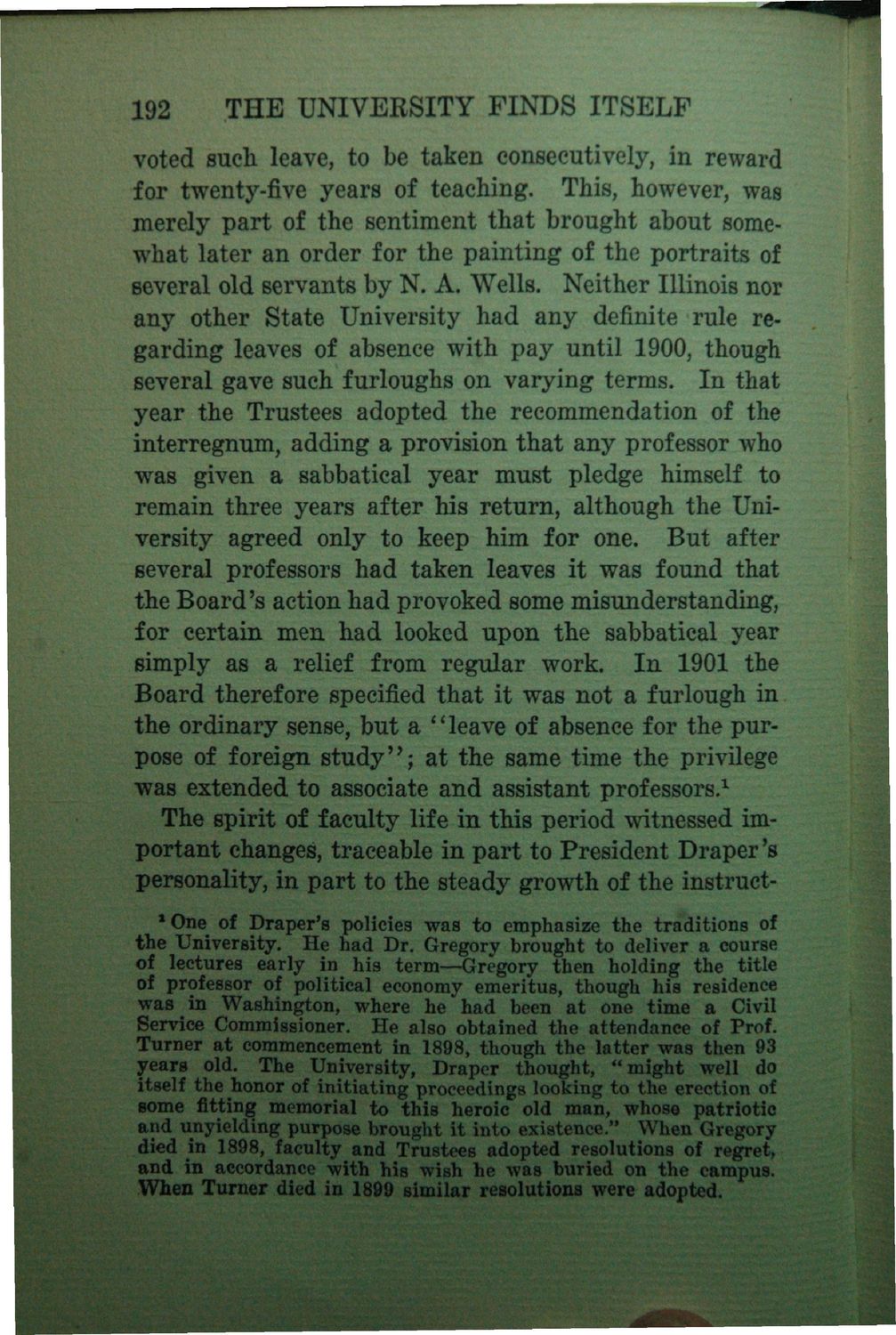| |
| |
Caption: Book - History of the University (Nevins)
This is a reduced-resolution page image for fast online browsing.

EXTRACTED TEXT FROM PAGE:
192 THE UNIVERSITY FINDS ITSELF voted such leave, to be taken consecutively, in reward for twenty-five years of teaching. This, however, was merely part of the sentiment that brought about somewhat later an order for the painting of the portraits of several old servants by N. A. Wells. Neither Illinois nor any other State University had any definite rule regarding leaves of absence with pay until 1900, though several gave such furloughs on varying terms. In that year the Trustees adopted the recommendation of the interregnum, adding a provision that any professor who was given a sabbatical year must pledge himself to remain three years after his return, although the University agreed only to keep him for one. But after several professors had taken leaves it was found that the Board's action had provoked some misunderstanding, for certain men had looked upon the sabbatical year simply as a relief from regular work. In 1901 the Board therefore specified that it was not a furlough in the ordinary sense, but a "leave of absence for the purpose of foreign study"; at the same time the privilege was extended to associate and assistant professors.1 The spirit of faculty life in this period witnessed important changes, traceable in part to President Draper's personality, in part to the steady growth of the instruct* One of Draper's policies was to emphasize the traditions of the University. He had Dr. Gregory brought to deliver a course of lectures early in his term—Gregory then holding the title of professor of political economy emeritus, though his residence was in Washington, where he had been at one time a Civil Service Commissioner. He also obtained the attendance of Prof. Turner at commencement in 1898, though the latter was then 03 years old. The University, Draper thought, "might well do itself the honor of initiating proceedings looking to the erection of some fitting memorial to this heroic old man, whose patriotic and unyielding purpose brought it into existence." When Gregory died in 1898, faculty and Trustees adopted resolutions of regret, and in accordance with his wish he was buried on the campus. When Turner died in 1809 similar resolutions were adopted.
| |